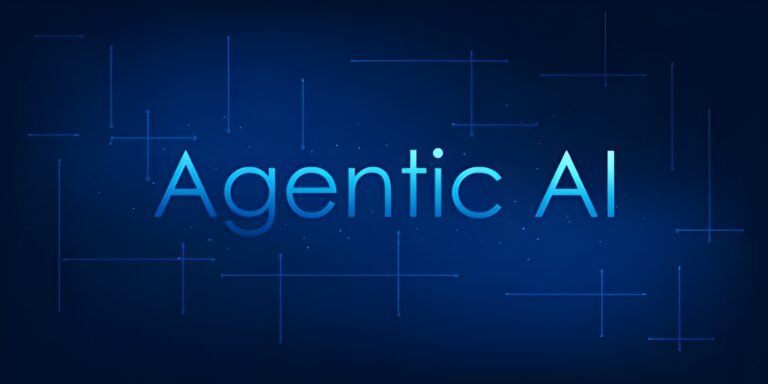In today’s fast-evolving technological landscape, businesses strive to leverage Artificial Intelligence (AI) to optimize operations, enhance decision-making, and deliver innovative products and services. However, integrating AI into existing IT infrastructures is a complex process that requires deep expertise and careful planning. This is where AI development company play a crucial role. They help organizations seamlessly embed AI technologies within current systems, ensuring compatibility, scalability, and minimal disruption.
In this article, we explore the typical steps, challenges, and best practices involved when an AI development company integrates AI with existing business systems. Understanding this process can help businesses prepare for a smoother digital transformation journey.
Assessing Current Systems and Business Needs
Before any technical work begins, an AI development company conducts a thorough assessment of the client’s existing IT landscape and business objectives. This includes reviewing software platforms, databases, data formats, APIs, workflows, and hardware. Understanding how these components interact is essential for identifying integration points and potential limitations.
Simultaneously, the company works closely with stakeholders to clarify the business goals that AI should address — whether it’s automating repetitive tasks, improving customer insights, optimizing supply chains, or enhancing product recommendations. This dual assessment ensures that the AI solution is aligned with both technical feasibility and strategic value.
Data Collection, Cleaning, and Preparation
AI systems rely heavily on high-quality data, often stored across multiple legacy systems. Integrating AI requires gathering relevant datasets, which can be fragmented, inconsistent, or incomplete. AI development companies specialize in data engineering — extracting, transforming, and loading (ETL) data into formats suitable for training AI models.
This stage includes cleaning the data to remove errors, duplicates, and irrelevant entries, as well as normalizing data to ensure consistency. Preparing data properly is critical because the quality of AI insights depends directly on the quality of the underlying data.
Choosing the Right AI Models and Tools
Once the data and system architecture are understood, AI developers select or develop appropriate AI models tailored to the business’s needs. These models can range from machine learning classifiers to deep learning neural networks, natural language processing (NLP) algorithms, or computer vision solutions.
AI development companies have expertise with various frameworks and platforms such as TensorFlow, PyTorch, and cloud-based AI services from AWS, Google Cloud, or Microsoft Azure. Selecting the right tools ensures compatibility with existing systems and scalability for future growth.
Designing the Integration Architecture
Integrating AI involves designing a system architecture that allows AI components to communicate with legacy applications and databases. This often requires building middleware or APIs that serve as bridges between AI models and existing software.
For example, an AI-powered recommendation engine may need to interface with an e-commerce platform’s product database and customer profiles. The integration architecture must ensure secure data transfer, low latency, and fault tolerance.
AI development companies often adopt microservices architecture, where AI functionalities are modularized into independent services that can be deployed and updated without affecting the entire system.
Implementing APIs and Middleware
APIs (Application Programming Interfaces) are essential for enabling communication between AI models and existing software systems. AI developers create custom APIs that allow legacy applications to send data to AI services and receive predictions or insights in return.
Middleware acts as an intermediary layer that manages data flow, handles authentication, and orchestrates multiple AI services if needed. Proper API and middleware implementation ensure that the AI integration is seamless, maintainable, and secure.
Ensuring Scalability and Performance
Performance is a critical factor when integrating AI into operational systems. AI development companies optimize models and infrastructure to meet real-time or near-real-time requirements. They leverage cloud computing, GPU acceleration, and containerization technologies like Docker and Kubernetes to scale AI workloads efficiently.
By designing scalable AI systems, companies ensure that the solution can handle increased data volumes and user demands as the business grows, without degradation in speed or accuracy.
Testing and Validation
Comprehensive testing ensures that AI integrations work correctly within the existing ecosystem. AI development companies perform unit tests, integration tests, and user acceptance testing (UAT) to validate functionality, data accuracy, and performance.
They also monitor AI models for bias, drift, or unexpected behaviors that could impact decision-making. Continuous testing helps maintain reliability and trust in AI-powered systems.
Training and Change Management
Successful AI integration requires training for staff who will interact with the new tools and processes. AI development companies often provide user training sessions, documentation, and ongoing support to help businesses adapt.
Change management strategies address employee concerns, encourage adoption, and ensure that AI tools enhance rather than disrupt workflows.
Security and Compliance Considerations
AI integration involves handling sensitive business and customer data. AI development companies prioritize security by implementing encryption, access controls, and secure authentication methods throughout the integration process.
Additionally, they ensure compliance with industry regulations such as GDPR, HIPAA, or CCPA, adapting AI solutions to meet legal requirements related to data privacy and protection.
Continuous Monitoring and Maintenance
AI integration is not a one-time event. Post-deployment, AI development companies set up monitoring systems to track AI model performance, detect data drift, and identify anomalies. They provide maintenance services to retrain models, update integrations, and incorporate feedback.
This ongoing support ensures that AI remains effective and aligned with evolving business needs.
Benefits of Professional AI Integration
Partnering with an AI development company for integration brings numerous advantages. Businesses gain access to specialized knowledge, tested methodologies, and resources that reduce risk and accelerate deployment. Professional integration ensures that AI solutions complement existing systems rather than disrupt them, delivering tangible business value quickly.
Furthermore, development companies help future-proof investments by designing scalable, flexible architectures ready for new AI advancements.
Conclusion: AI Development Driving Seamless Integration
AI integration with existing systems is a multifaceted challenge that requires technical expertise, strategic planning, and continuous collaboration. AI development companies excel at bridging the gap between legacy infrastructure and cutting-edge AI technologies, enabling businesses to harness AI’s full potential through enterprise AI development.
As AI continues to evolve, these companies will play an increasingly critical role in helping organizations navigate complexity and achieve innovation. Investing in professional AI development services for integration is not just about technology — it’s about empowering businesses to stay competitive and agile in a digital-first world.





